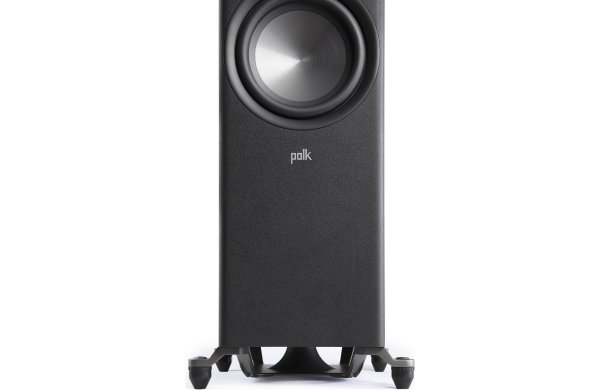In this review, we will be comparing R700 and Navis ARF-51, two Floor-standing speakers from Polk Audio and ELAC. The main difference between these two speakers is that the ELAC Navis ARF-51 is a Powered speaker which means that it has a built-in amplifier inside the speaker body so you don't need an external power amp or an integrated amp whereas the Polk R700 is a Passive speaker so has to be matched with an amplifier to get any sound from it.
Let's have a brief look at the main features
of Polk R700 and ELAC Navis ARF-51 first before getting into our more
detailed comparison.
Polk R700 Key Specs
- 3-way Design
- 1" Pinnacle Ring Radiator Tweeter
- 6.5" Midrange
- 2 x 8" Polypropylene Woofer
- 38-38k Hz Frequency Response
- 88 dB Sensitivity
- Impedance: 8ohms
- Power Range:50-300watts
- Weight:35.90kg
- Dimensions (H x W x D): 1143.8" x 12.6" x 16.9"( 1143.8 x 320.7 x 428.3mm )
ELAC Navis ARF-51 Key Specs
- 3-way Design
- 300-watt RMS Integrated Amplifier
- 1" Soft-Dome Tweeter
- 4" Midrange
- 5.25" Aluminum Woofer
- 4" Midrange
- 43-28k Hz Frequency Response
- N/A Max Depth / N/A Max Sample Rate
- Optional Bluetooth
- Weight:21.00kg
- Dimensions (H x W x D): 1070.0" x 9.6875" x 11.5625"( 1070.0 x 247.0 x 294.0mm )
In the following sections, we will get into more detail in order to better understand how the Polk R700 and ELAC Navis ARF-51 compare and hopefully end up with enough arguments to decide which one of these loudspeakers is the better choice for you.
**This post contains affiliate links, and I will be compensated if you make a purchase after clicking
through my links. As an Amazon Associate I earn from qualifying purchases.
Drivers
Both R700 and Navis ARF-51 are 3-way speakers.
| Driver |
Polk R700 |
ELAC Navis ARF-51 |
|
Driver Setup
|
3-way
|
3-way
|
|
Tweeter
|
1-inch
|
1-inch
|
|
Midrange
|
1 x 6.5-inch |
1 x 4-inch |
|
Woofer
|
2 x 8-inch
|
1 x 5.25-inch
|
R700 features a 1" Pinnacle Ring Radiator Tweeter , a 6.5" Midrange and 2 x 8" Polypropylene Woofer with a Crossover frequency at 350Hz and 2700Hz. On the other hand, the Navis ARF-51 features a 1" Fabric Soft-Dome Tweeter , a 4" Midrange and 1 x 5.25" Aluminum Woofer .
Frequency Response
R700 has a frequency range of 38-38k Hz whereas Navis ARF-51 has a frequency range of 43-28k Hz. With a minimum frequency of 38Hz, the R700 can go significantly deeper on the low side and provide stronger bass compared to the Navis ARF-51's min frequency of 43Hz.
Below graphs depict how these two speakers compare with the max, min and average values of the Min and Max Frequencies of other speakers in the Floor-standing class in our database.
Low Frequency
Floor-standing Speakers
High Frequency
Floor-standing Speakers
None of these speakers achieves full range experience which is commonly agreed as 20Hz-20kHz. In order to achieve lower lows / deeper bass, we recommend you pair these with a subwoofer. Visit our Powered Subwoofers section to find out more about the available options.
Cabinet Type and Port Position
R700 has a bottom firing port whereas Navis ARF-51 has a rear firing ports. Polk R700's bottom-firing port gives more flexibility in placement in regards to proximity to walls compared to ELAC Navis ARF-51 with its rear-firing port.
 Polk R700 Port
Polk R700 Port
Physical Specs
Size of a speaker can sometimes become an important decision factor due to space constraints or in some cases purely for esthetic reasons. In this section, we are going to compare Polk R700's and ELAC Navis ARF-51's external dimensions. Polk R700 has external dimensions of 1143.8 x 320.7 x 428.3mm ( 45 x 12.6 x 16.9inch) whereas ELAC Navis ARF-51 has external dimensions of 1070.0 x 247.0 x 294.0mm ( 42.125 x 9.6875 x 11.5625inch) .
Polk R700 is clearly the larger of the two speakers. Its body is 73.7mm wider, 73.8mm taller and 134.3mm deeper than ELAC Navis ARF-51.
Base Surface Area Comparison
Base surface area of a loudspeaker may become a determining factor when the space in your room or desk is limited.
The base surface area of the Polk R700 is approximately 1373.6cm2 / 212.9inch2 and base area of the ELAC Navis ARF-51 is approximately 726.2cm2 / 112.6inch2. The R700 requires 89% more surface area than the Navis ARF-51 which gives it a small disadvantage on placement in tight spaces.
What's in the Box of Polk R700?
Here are the items that are included inside the box of R700:
Floorstanding loudspeaker
4 Outrigger feet (pre-installed)
4 Rubber feet (pre-installed)
4 Spike feet (pre-installed)
Grille
Hex-key
Owner's Manual
Online Registration
What's in the Box of ELAC Navis ARF-51?
Here are the items that come with the Navis ARF-51:
Powered floorstanding loudspeaker8-feet AC power cordBase plate4 Spikes4 Isolation pucks4 ScrewsOperating Instructions